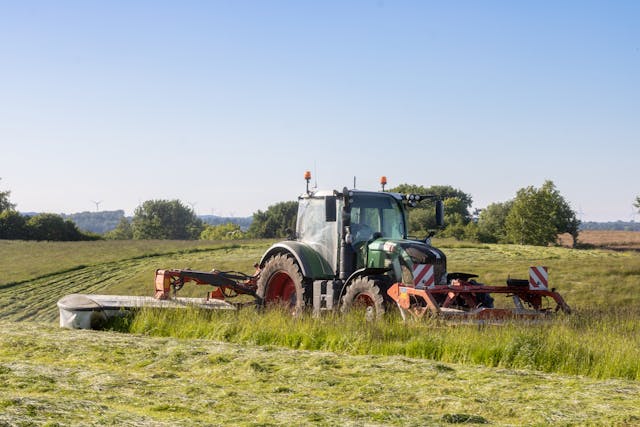Will a Wheel Horse 5-0621 mowing deck fit a 300 series tractor? Explore the compatibility, modifications, and tips in this deep dive.
You asked a deceptively simple question: Will a Wheel Horse 5-0621 mowing deck fit a 300 (series tractor)?
In reality, that single line hides a labyrinth of mechanical caveats, vintage parts, geometry puzzles, and “well, maybe with work” scenarios. Much like navigating complex business debt schedules, understanding equipment compatibility requires careful planning and attention to detail. In this article, we’ll walk step by step through what “fit” really means, what obstacles you’ll likely run into, what modifications are feasible (or not), and how to decide whether to attempt it, or find a more compatible deck instead.
I’ll even admit when sources contradict, and I’ll share real-world stories from owners and restorers who’ve tried similar swaps. Let’s get into it.
Article Breakdown
Why This Question Even Matters
It’s tempting to assume that because older Wheel Horse decks often look similar, they must be interchangeable. But matching a deck to a tractor isn’t just about size or bolt holes, it’s about alignment, pulley spacing, belt routing, lift systems, shaft configuration, and in many cases, what the manufacturer intended.
If you plug in a mis-matched deck, you risk:
- Belt binding, slippage, or interference
- Misalignment that grinds bearings
- Structural stress on mounts or brackets
- Poor cutting quality
- Costly modifications that exceed the value of a “free deck”
So before making that swap, you owe it to yourself (and your 300 series) to do your homework. Let’s break it down.
What Is the Wheel Horse 5-0621 Deck?
To understand compatibility, we first need to know what we’re dealing with. The 5-0621 is an older Wheel Horse rotary mower deck, typically a 36-inch rear discharge (“RD”) model, built around 1973–1974.
Some key specs and facts:
- It’s known as the “Mower Rotary 36in RD model 5-0621.”
- It was originally designed to work with medium and long frame tractors of that era.
- It’s a smaller, compact deck meant for efficiency and maneuverability.
The 5-0621 is a well-documented deck, but it was tied to a specific generation of tractors, and that’s where compatibility questions begin.
What Is “300” in This Context?
When you say “a 300,” it’s most likely referring to a Wheel Horse 300 series tractor, models such as the 312, 314, or 318. These were later-era garden tractors with updated designs, different lift systems, and refined frame geometries compared to their 1970s predecessors.
If that’s the case, the question becomes:
Can an older 1970s deck physically and mechanically mount to a later 300-series tractor designed for different standards?
That’s the heart of this discussion.
What Owners Say: Mixed Opinions Everywhere
In community discussions, owners are split. Some say decks like the 5-0621 can be adapted to later 300 series tractors, while others warn against even trying.
The “Yes, with effort” camp
This group believes that if both deck and tractor share similar attach systems (like the Attach-A-Matic system), compatibility might be possible. Sometimes, a few minor adjustments or custom brackets make it work.
The “Don’t bother” camp
Others argue that while the deck and tractor might “look” similar, small geometric differences, such as pulley heights, belt paths, and lift linkage angles, make them functionally incompatible.
The frustration often comes from discovering that even a half-inch difference in mount spacing or pulley offset can throw off the whole system.
The truth? Both sides are right, depending on which specific model of 300 you own and how much mechanical work you’re willing to do.
What “Fit” Actually Means
Before deciding, it’s crucial to define what “fit” really means. It’s not just “can I bolt it on?” but rather “can I safely and efficiently mow with it?”
Here are the factors that decide whether a deck fits a tractor:
| Criteria | What Needs to Match/Be Adaptable | Why It Matters |
| Mount hole spacing | The physical points where the deck connects to the tractor frame. | Misaligned holes mean unstable mounts. |
| Lift linkage geometry | The deck’s lift arms must engage at correct angles. | Wrong angles cause uneven cuts and strain. |
| Belt path alignment | Belt route from PTO to deck pulleys. | Misaligned belts slip or wear out fast. |
| Pulley placement and size | Input pulley must match PTO height and offset. | Incorrect pulleys create vibration and friction. |
| Shell clearance | Deck shell must clear wheels and frame. | Too tight = rubbing, too loose = unstable. |
| Structural strength of mounts | Modified brackets must handle the stress. | Weak mounts crack over time. |
If any of these areas differ drastically between the deck and tractor, “fit” becomes a serious challenge.
Comparing a 300 Series Deck vs. a 5-0621
Let’s compare what a typical 300-series deck offers versus the 5-0621, and where problems arise.
300-Series Decks
- Usually 42″ or 48″ cutting width
- Updated pulley and belt routing
- Designed for newer lift mechanisms
- Balanced geometry for heavier frames
- Uses more standardized parts
The 5-0621 Deck
- 36″ cutting width
- Built for older medium-frame tractors
- Compact design, lighter construction
- Different lift and pulley alignment
- Older-style brackets and linkages
So even if it looks “close,” the differences add up fast. The smaller width might seem convenient, but it doesn’t guarantee proper alignment. A deck that’s physically narrower could still collide with linkage arms or pull belts at bad angles.
Step-by-Step Fit Evaluation Checklist
If you’re the hands-on type and want to confirm compatibility yourself, here’s a field-tested method to evaluate fit before wasting time on a failed mount.
- Measure your deck’s mounting points.
Record front-to-back and side-to-side distances. - Compare to your 300’s frame.
Check lift arm spacing, PTO height, and front mount bar width. - Simulate installation.
Use blocks or stands to position the deck roughly where it would sit. - Mark pulley alignment.
Check if the PTO pulley and deck pulley align within 1/4 inch. If not, belts will fail quickly. - Inspect lift geometry.
Does the deck lift evenly front to back? Or does it tilt? Uneven lift causes poor cuts. - Check for clearance.
Make sure the shell clears tires, steering linkages, and frame components. - Mock belt routing.
Thread a belt (without running it) to see where tensioners would sit. - Evaluate structure.
If brackets flex or require welding extensions, note stress points. - Test rotation manually.
Spin blades by hand, listen for binding, scraping, or uneven travel. - Assess modification effort.
If you need major fabrication (cutting, welding, relocating pulleys), decide if it’s truly worth it.
If you reach step 7 or 8 and alignment still looks bad, that’s a clear sign the deck was never meant for the tractor.
Real-World Scenarios
Scenario 1: The Lucky Fit
A user once reported using a similar 36″ rear discharge deck on a 312-A successfully. He only had to slightly adjust a bracket and shorten the belt. The attach system was compatible, so it functioned properly for years.
In short, it worked because geometry and attach points were close enough.
Scenario 2: The Unstable Mount
Another owner tried to retrofit the same deck onto a 314-8. The deck tilted forward during lifting, scraping the ground unevenly. The lift rods were at the wrong angle, and belt tension varied dramatically. He eventually gave up and sourced a proper 42″ deck.
Scenario 3: The Custom Welder
One determined hobbyist fabricated custom adapter plates and brackets, carefully aligning the pulley path using a laser guide. After three weekends, it finally worked, but only after welding reinforcements and sourcing a custom-length belt.
His conclusion: “It fits now, but I wouldn’t do it again.”
These examples highlight the key point, success depends on how precise and patient you are.
The Reality: It Probably Won’t Fit Perfectly
As it stands, the Wheel Horse 5-0621 deck was not designed for a 300-series tractor. The mounting geometry, belt alignment, and lift systems are different.
That doesn’t mean it’s impossible. But it means you’ll be modifying parts, not just attaching them.
If you expect a plug-and-play fit, you’ll be disappointed. If you enjoy tinkering and problem-solving, you might find it a fun project. The 5-0621 is small and light enough that it won’t overload a 300’s frame, but expect to rework linkages and brackets before it behaves properly.
If You Still Want to Try
Here’s a safe roadmap for attempting the conversion.
1. Gather reference materials
Get all available measurements and manuals for both the deck and the tractor. This will save you hours of guesswork.
2. Dry fit before cutting or welding
Use clamps and supports to test the setup without committing. It’s much easier to adjust when nothing is permanent.
3. Adjust linkage lengths
If the deck tilts, modify or replace lift rods to balance height and angle.
4. Reroute the belt
You may need a different belt size or extra idlers. Avoid sharp angles that cause stress on the belt.
5. Reinforce custom mounts
Homemade brackets often flex; reinforce them with thicker steel or gussets to avoid cracking over time.
6. Test gradually
Run the deck at idle before mowing. Listen for noise, vibration, or heat. Then test in short passes on light grass before tackling larger areas.
When to Stop
It’s important to know when a retrofit stops being practical. Walk away if you find:
- Mount points differ by more than an inch
- Belt centerlines can’t align without extreme rerouting
- The lift system cannot raise or lower evenly
- Deck collides with frame or steering components
- Required fabrication compromises safety or balance
At that stage, finding a compatible deck is cheaper, faster, and safer.
Better Alternatives
If the retrofit turns into a nightmare, here’s what you can do instead:
- Find a deck built for 300-series tractors. They’re still common and designed for your frame.
- Use a donor deck from a similar model or one known to share mounting geometry.
- Commission a fabricator if you love the 5-0621’s performance but need professional adaptation.
- Keep the 5-0621 as a collector’s piece. It’s a great vintage deck with historical charm.
Sometimes, walking away from the wrong fit is the best maintenance decision you’ll ever make.
The Emotional Side of Vintage Compatibility
There’s something deeply personal about making old equipment work again. You’re not just connecting steel parts, you’re connecting eras.
But emotion can cloud judgment. Just because you want the deck to fit doesn’t mean it should. If you find yourself trying to force mismatched holes or re-engineering the belt path for days, take a breath. The best mechanics know when to stop.
Sometimes the most satisfying projects are the ones you decide not to finish, because you learned exactly how things fit, even if they never ran together.
Key Takings
- The 5-0621 is a 36″ rear discharge deck from early 1970s models.
- The 300 series tractors are newer, with different mounting and pulley geometry.
- Out of the box, the deck will not fit perfectly.
- Mount spacing, lift linkage, belt routing, and shell clearance are the biggest hurdles.
- With modifications, new brackets, pulleys, and careful alignment, it can work.
- Test and measure before cutting or welding anything.
- For most owners, finding a 300-series-compatible deck is the wiser move.
- Passion projects are rewarding, but safety and balance come first.
Additional Resources:
- MyWheelHorse Documentation Archive: Original Wheel Horse manuals and diagrams for models, decks, and attachments.
- WheelHorseForum Implements Discussions: Owners share real-world compatibility tips, modifications, and restoration advice.



